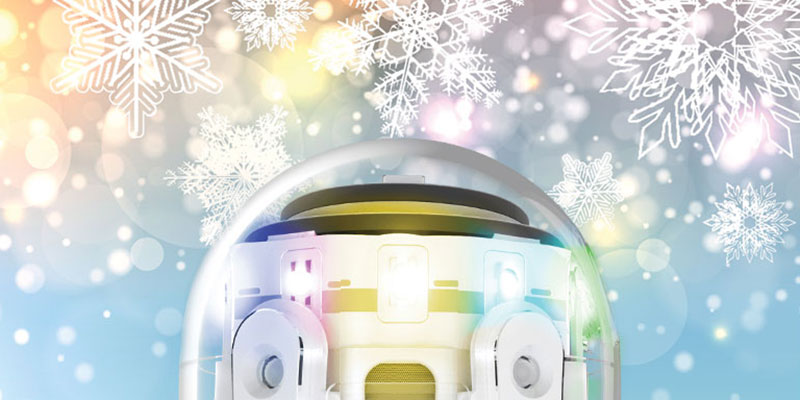There is something quite magical about the winter season. The teeth-chattering breeze, trees dressed in white and water frozen over. This is the time of year when children grab their gloves and run outside to build snowmen and battle their friends in snowball fights.
Snowflakes are intricate symbols of this season. They fall from the sky, seemingly out of nowhere, and land on cold noses or perhaps are caught on an eager tongue. We all know that snowflakes are beautiful and unique, but what about the science behind them?
Sci-Fi author, Arthur C. Clarke, once said, “Magic is just science that we don’t understand yet.” It’s no doubt that snowflakes seem magical, so let’s dive into some cool science facts behind them to better understand their magic.
They’re formed in clouds
Many people believe that snowflakes are formed when a raindrop freezes as it falls from the sky. This isn’t entirely false. Snowflakes are formed when rain droplets freeze, but that happens inside the cloud. Water vapor from the cloud assembles on these ice particles, causing it to stretch into a hexagonal prism and then shoot branches to create a more complex shape. The temperature and dampness of the cloud affect a snowflake’s shape, so they are constantly changing.

There are five main types
Depending on the temperature, a snowflake can take the form of one of these five shapes: plates (flat), columns, prisms, dendrites, and needles. The largest, most photogenic stellar snow crystals only grow in a narrow temperature range around -15 °C (5 °F).
It all starts with a tiny speck of dust or pollen
Each snowflake starts out as a small speck of dust or pollen that catches water vapor in the air and eventually forms diamond dust, the smallest and simplest of snowflake shapes. From there, randomness takes over. Temperature ranges create different snowflake shapes.
Snowflakes are made up of snow crystals
We generally refer to the term “snowflake,” however, snow crystals are where we see the elaborate icy designs.
According to Kenneth G. Libbrecht, professor of physics at California Institute of Technology and the snow-obsessed mind behind snowcrystals.com, “a snow crystal is a single crystal of ice, within which the water molecules are all lined up in a precise hexagonal array. Snow crystals display that characteristic six-fold symmetry we are all familiar with.
A snowflake, on the other hand, is a more general term. It can mean an individual snow crystal, but it can also mean just about anything that falls from the winter clouds. Often hundreds or even thousands of snow crystals collide and stick together in mid-air as they fall, forming flimsy puff-balls we call snowflakes. Calling a snow crystal a snowflake is fine, like calling a tulip a flower.”

Two snowflakes CAN look alike
Kenneth G. Libbrecht has been making “designer snowflakes” in his lab. A designer snowflake is one that is real ice, grown from water vapor, but created under controlled conditions.
He has been able to grow “identical-twin” snowflakes under controlled conditions. He says on his website, “I use this term because, like identical-twin people, these snow crystal twins are clearly very similar to one another, although they are not precisely identical.”
Snow crystal symmetry requires symmetrical growth conditions. If the six arms experience different environments, they will grow differently.
Why snowflakes grow the way they do is still not fully understood by scientists. That’s what makes them even more extraordinary.
Images: Ozobot, © Alexey Kljatov, © TheVagabond V.Schaal









